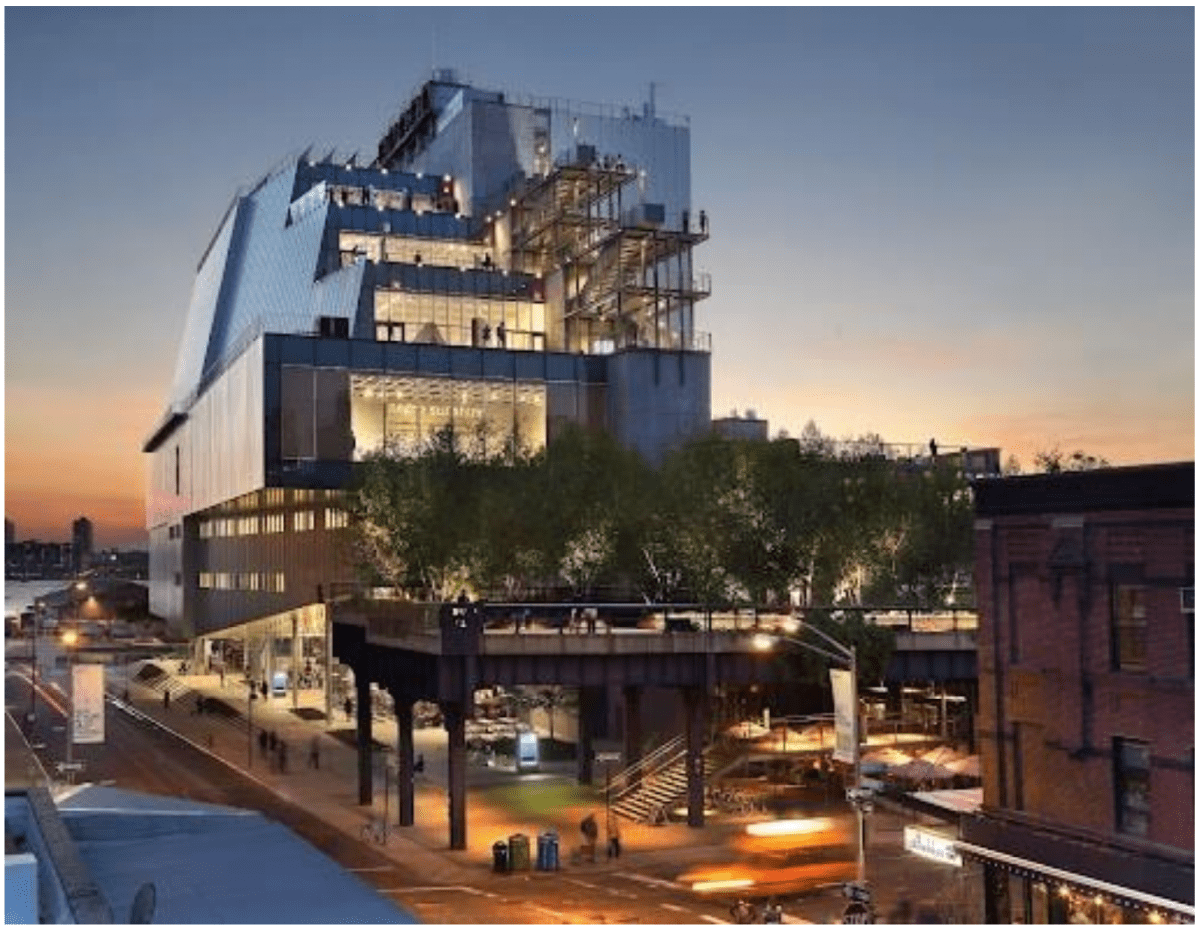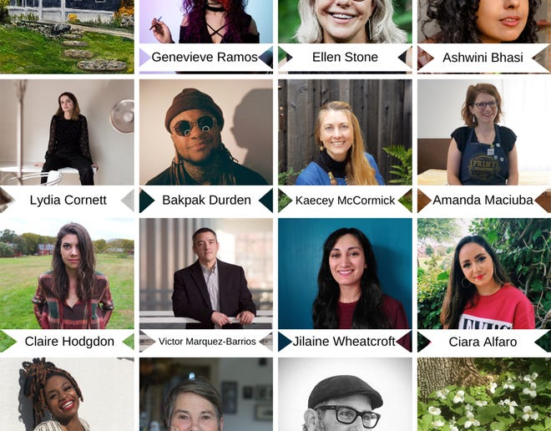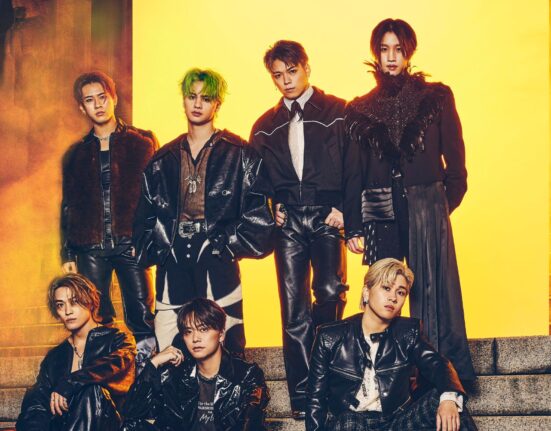Photo by Ed Lederman
The endowment, established to honor the career of former Alice Pratt Brown Director Adam D. Weinberg, will honor Weinberg’s unwavering commitment to artists, with a focus on exhibition “firsts”
The Museum has also received several artworks as gifts in Weinberg’s honor, including works by Rashid Johnson, Maya Lin, Marilyn Minter, and Lawrence Weiner
The Whitney Museum of American Art has announced the Adam D. Weinberg Artists First Fund, established to honor the visionary career and indelible legacy of Adam D. Weinberg, the Museum’s former Alice Pratt Brown Director.
Weinberg—a renowned curator, strong leader, and champion of artists—announced in March 2023 that he would leave the Museum after a remarkable and transformative 20-year tenure as director. His last day was October 31, 2023.
The endowment established in his honor will further Weinberg’s unwavering commitment to artists by supporting in perpetuity boundary-breaking exhibitions at the Whitney: debut exhibitions, first surveys, first displays of works from the collection, exhibitions that explore new ideas or push the limits of artistic expression, or other examples of projects that break new ground and nurture the careers of artists and curators.
The fund currently sits at over $8.4 million, and will immediately support the exhibition Edges of Ailey, the first large-scale museum exhibition to reflect on the life, work, and legacy of visionary artist Alvin Ailey, opening in September 2024.
“Adam was an extraordinary leader, who gave so much to the Whitney and the broader cultural community. We are so proud to honor him with this fund, which will support what he loved most about the Whitney–its commitment to artists and innovation,” said Scott Rothkopf, Weinberg’s successor as Alice Pratt Brown Director. “We thank Adam for all he has done for the Whitney, and are also deeply grateful to our Board of Trustees and all those who contributed to this effort.”
In addition to the fund, several artworks have been gifted to the Museum’s collection in honor of Weinberg, including two that will soon be on public display: New Poetry by Rashid Johnson, a newly-commissioned black steel sculpture that is on view in the Museum’s ground floor restaurant space, and Around and About . . . , a 1971 piece by Lawrence Weiner that will be installed in the Whitney’s western-most staircase in 2023.
Other gifts include works by Siah Armajani, Titus Kaphar, Maya Lin, and Marilyn Minter.
About Adam D. Weinberg
Adam Weinberg’s time as director was marked by the relocation of the Museum from the Upper East Side to the Meatpacking District in a new downtown building designed by Renzo Piano, which opened to acclaim in 2015. Weinberg worked with the Board to complete a $765 million capital campaign and oversaw the design development on a project that was triple the size of the Whitney’s uptown location and gave the Museum its first theater, education center, study center, and conservation center. The new Whitney enabled a major expansion of the curatorial program and a renewed engagement between the Museum and the artistic and social milieu of Downtown Manhattan.
Under Weinberg’s leadership, annual attendance at the Whitney grew from 400,000 to 1.2 million (pre-pandemic), membership from 12,000 to 50,000, and the endowment from $40 million to more than $400 million. The staff increased from 200 to more than 400 and became more diverse, as did the Board of Trustees, which expanded during his tenure and added artist members Julie Mehretu and Fred Wilson. Most important of all, the Whitney rose to a new role in its city and the cultural world.
During the course of his directorship, Weinberg oversaw the presentation of more than 300 exhibitions, including nine editions of the Whitney’s signature Biennial and large-scale installations of the permanent collection, including the inaugural exhibition in the Downtown Whitney, America is Hard to See. Major Whitney-organized exhibitions explored the works of dozens of artists—senior (such as Frank Stella, Carmen Herrera, and Lawrence Weiner), mid-career (such as Julie Mehretu, Roni Horn, and Lorna Simpson), and historic (such as Gordon Matta-Clark, Georgia O’Keeffe, and Edward Hopper). Weinberg initiated the first strategic plan for the Whitney’s collection, built the collection endowment from $2 million to more than $27 million, and brought nearly 4,000 works into the Whitney’s holdings, including masterworks by Carmen Herrera, Jasper Johns, Norman Lewis, Archibald Motley, and the Roy Lichtenstein Study Collection.
Under Weinberg’s direction, the Whitney’s commitment to living artists has been paramount, with an expansion of its emerging artist exhibitions and programs as well as the introduction of the comprehensive artist payment program (including provisions that made the Whitney the first museum to pay honoraria to artists for displaying works in the collection). The Museum also reaffirmed the central importance of its fifty-plus-year Independent Study Program through the establishment of a permanent home for the Program at the Roy Lichtenstein Studio—a gift of Dorothy Lichtenstein—and its first artist-in-residence apartment and studio, which has been added to the Lichtenstein Studio.
Among Weinberg’s other achievements, he initiated and managed the project to create the largest permanent project by artist David Hammons, Day’s End, at Pier 52, adjacent to the Downtown Whitney; and arranged for the collaborations with the Met and the Frick at the Whitney’s Upper East Side Breuer building.
A graduate of Brandeis University (BA) and the Visual Studies Workshop, SUNY Buffalo (MFA), Adam Weinberg began his career at the Walker Art Center, where he served as Director of Education and Assistant Curator. He joined the Whitney for the first time in 1989 as Director of the Whitney branch at the Equitable Center. After assuming the post of Artistic and Program Director of the American Center in Paris in 1991, he returned to the Whitney in 1993 as Curator of the Permanent Collection and was made Senior Curator in 1998. From 1999 to 2003, he served as the Mary Stripp and R. Crosby Kemper Director of the Addison Gallery of American Art at Phillips Academy, Andover. He was named Alice Pratt Brown Director of the Whitney in 2003.
Weinberg serves as a board member of Storm King Art Center, the American Academy in Rome, the Terra Foundation for American Art, and the Star of Hope Foundation and has been a past board member of the American Federation of the Arts, Andy Warhol Foundation for the Visual Arts, Colby College Art Museum, the Tang Museum at Skidmore College, and the Williamstown Art Conservation Center. He is a member of the Advisory Committee for the Archives of American Art, the Scientific Committees of the Sebançi Museum in Istanbul and The Art Mill Museum in Doha, and a member of the Director Selection Commission of the MADRE Museum in Naples. He served as the Chair of the Visiting Committee for the Harvard University Art Museums, a member of the Art Committee of Madison Square Park Conservancy, and a member of the Committee of Selection of The Pollock-Krasner Foundation.
Weinberg has received honorary PhDs from Colby College, Hamilton College, and the Pratt Institute. He is a Fellow of the American Academy of Arts and Sciences and has received numerous awards, including the Merit Award from The American Institute of Architects, the Rudin Award for Exemplary Service to New York City from New York University, and the Award for Distinguished Service to the Arts from the American Academy of Arts and Letters. In 2015, he was awarded the Insignia of Officer of the Order of Arts and Letters by the French government.
ABOUT THE WHITNEY
The Whitney Museum of American Art, founded in 1930 by the artist and philanthropist Gertrude Vanderbilt Whitney (1875–1942), houses the foremost collection of American art from the twentieth and twenty-first centuries. Mrs. Whitney, an early and ardent supporter of modern American art, nurtured groundbreaking artists when audiences were still largely preoccupied with the Old Masters. From her vision arose the Whitney Museum of American Art, which has been championing the most innovative art of the United States for ninety years. The core of the Whitney’s mission is to collect, preserve, interpret, and exhibit American art of our time and serve a wide variety of audiences in celebration of the complexity and diversity of art and culture in the United States. Through this mission and a steadfast commitment to artists, the Whitney has long been a powerful force in support of modern and contemporary art and continues to help define what is innovative and influential in American art today.
Whitney Museum Land Acknowledgment
The Whitney is located in Lenapehoking, the ancestral homeland of the Lenape. The name Manhattan comes from their word Mannahatta, meaning “island of many hills.” The Museum’s current site is close to land that was a Lenape fishing and planting site called Sapponckanikan (“tobacco field”). The Whitney acknowledges the displacement of this region’s original inhabitants and the Lenape diaspora that exists today.
As a museum of American art in a city with vital and diverse communities of Indigenous people, the Whitney recognizes the historical exclusion of Indigenous artists from its collection and program. The Museum is committed to addressing these erasures and honoring the perspectives of Indigenous artists and communities as we work for a more equitable future. To read more about the Museum’s Land Acknowledgment, visit the Museum’s website.
VISITOR INFORMATION
The Whitney Museum of American Art is located at 99 Gansevoort Street between Washington and West Streets, New York City. Public hours are Monday, Wednesday, and Thursday, 10:30 am–6 pm; Friday, 10:30 am–10 pm; and Saturday and Sunday, 10:30 am–6 pm. Closed Tuesday. Visitors eighteen years and under and Whitney members: FREE. Admission is pay-what-you-wish on Fridays, 7–10 pm. COVID-19 vaccination and face coverings are not required but strongly recommended. We encourage all visitors to wear face coverings that cover the nose and mouth throughout their visit.







